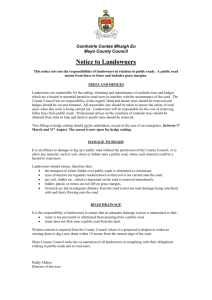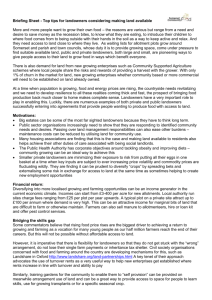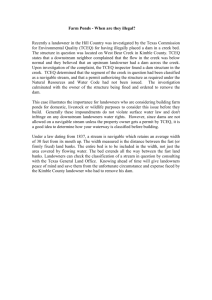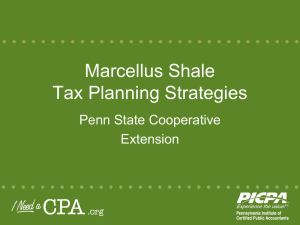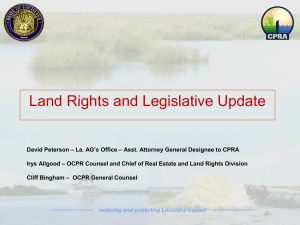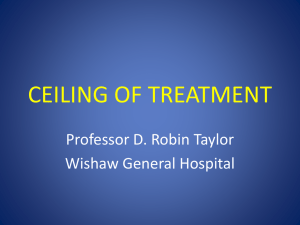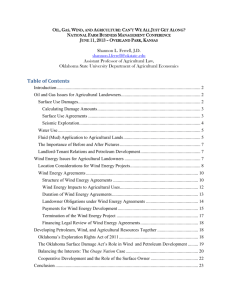SPECIAL CHARGE SCHEMES - Shire of Yarra Ranges
advertisement
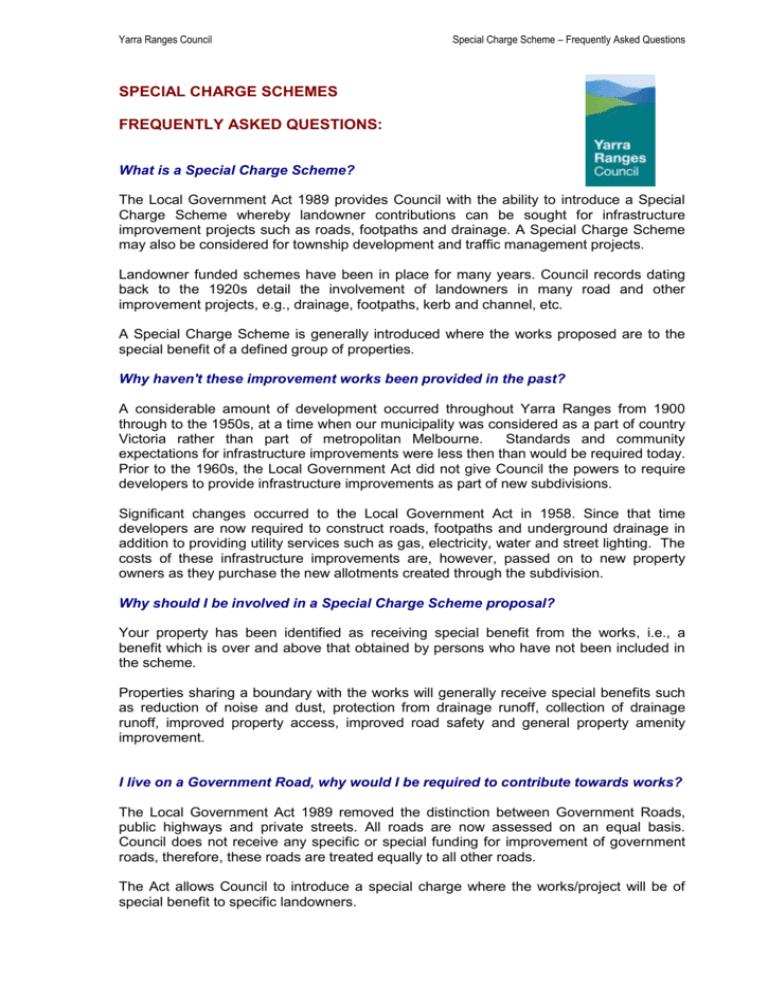
Yarra Ranges Council Special Charge Scheme – Frequently Asked Questions SPECIAL CHARGE SCHEMES FREQUENTLY ASKED QUESTIONS: What is a Special Charge Scheme? The Local Government Act 1989 provides Council with the ability to introduce a Special Charge Scheme whereby landowner contributions can be sought for infrastructure improvement projects such as roads, footpaths and drainage. A Special Charge Scheme may also be considered for township development and traffic management projects. Landowner funded schemes have been in place for many years. Council records dating back to the 1920s detail the involvement of landowners in many road and other improvement projects, e.g., drainage, footpaths, kerb and channel, etc. A Special Charge Scheme is generally introduced where the works proposed are to the special benefit of a defined group of properties. Why haven't these improvement works been provided in the past? A considerable amount of development occurred throughout Yarra Ranges from 1900 through to the 1950s, at a time when our municipality was considered as a part of country Victoria rather than part of metropolitan Melbourne. Standards and community expectations for infrastructure improvements were less then than would be required today. Prior to the 1960s, the Local Government Act did not give Council the powers to require developers to provide infrastructure improvements as part of new subdivisions. Significant changes occurred to the Local Government Act in 1958. Since that time developers are now required to construct roads, footpaths and underground drainage in addition to providing utility services such as gas, electricity, water and street lighting. The costs of these infrastructure improvements are, however, passed on to new property owners as they purchase the new allotments created through the subdivision. Why should I be involved in a Special Charge Scheme proposal? Your property has been identified as receiving special benefit from the works, i.e., a benefit which is over and above that obtained by persons who have not been included in the scheme. Properties sharing a boundary with the works will generally receive special benefits such as reduction of noise and dust, protection from drainage runoff, collection of drainage runoff, improved property access, improved road safety and general property amenity improvement. I live on a Government Road, why would I be required to contribute towards works? The Local Government Act 1989 removed the distinction between Government Roads, public highways and private streets. All roads are now assessed on an equal basis. Council does not receive any specific or special funding for improvement of government roads, therefore, these roads are treated equally to all other roads. The Act allows Council to introduce a special charge where the works/project will be of special benefit to specific landowners. Yarra Ranges Council Special Charge Scheme – Frequently Asked Questions What do the rates I pay go towards? Council’s budget is committed mainly to the provision of services such as garbage collection, recycling, community facilities, aged, disability and childcare services, parks and reserves, library services and expenditure on capital works. A large proportion of the capital works budget is allocated to preserving/maintaining existing assets for which Council is fully responsible. Yarra Ranges Council has significant demands for infrastructure improvements, with approximately 760 kilometres of unmade roads, limited footpath networks and a high demand for drainage improvements throughout the municipality. Unfortunately, Council does not have the capacity to meet the demand for these improvements or fully fund these works from rates that are collected. How does Council determine if a Special Charge Scheme will go ahead? Generally, Council will receive a petition from landowners along a road(s) indicating support for Council to undertake a Special Charge Scheme investigation. This petition will be reported to Council and then referred to the Infrastructure Services Department. Information on how to submit a petition to Council is available on Council’s website: http://www.yarraranges.vic.gov.au/About-Council/Council-meetings/SubmissionsQuestions-Petitions-to-Council/Submit-a-petition-to-Council An investigation will then be undertaken to determine an appropriate standard of construction and associated estimated cost for the proposed project. It will also assess any environmental, maintenance and planning related issues that may arise should the project proceed. The results of this investigation will then be reported to Council to determine if it is a project that Council will support. Should Council support the project a survey of landowners will be undertaken to determine if there is sufficient support from landowners whose properties share a boundary with the works and who would be required to contribute towards the project. To ensure that sufficient support exists for a proposal, Council seeks both a high level of response to the questionnaire and strong support from those that respond. Generally, projects will only proceed where a significant majority of landowners are supportive of the proposal. A support level in the order of 70% from a response rate in the order of 75% of landowners is required. If more than 75% respond to the questionnaire a reduced support level may be considered but only if there is still a significant overall majority supporting the proposed scheme, e.g., 85% response and 65% support. Therefore, to gain the best use of funds available, improvement works will generally require the involvement of these landowners in a landowner funded Special Charge Scheme. How much does Council contribute towards the works? Council currently has a policy of contributing 20% of the total project cost as an incentive for landowners to become involved. Council may consider increasing its contribution on behalf of the broader community where others will also receive some benefit from the works (such as a road that provides access to a number of other roads which, therefore, generates a higher volume of traffic). Yarra Ranges Council Special Charge Scheme – Frequently Asked Questions In the case of road improvements, traffic counts will be taken to determine the percentage of through traffic in comparison to traffic from landowners whose properties share a boundary with the works, which is then used to calculate Council’s contribution. Council also has a policy where a maximum ceiling will apply to landowner contributions towards Special Charge Schemes. This ceiling applies to individual residential properties. The ceiling does not apply to properties used for commercial or industrial purposes or for properties utilised for home based industry. Council will contribute for individual landowner costs above the ceiling (excluding financing costs). The maximum ceiling amount for projects undertaken in 2015/16 is $17,500, however, the ceiling is indexed on an annual basis as part of Council's budget process. Based upon past increases, it is anticipated that the ceiling will increase to $18,000 for 2016/17 projects and to $18,500 for 2017/18 projects. How are costs apportioned to landowners? Generally, individual lots will be charged one benefit/development unit, however, to recognise that some properties are larger than others the distribution may also take into consideration frontage, usually up to 10% of the total charge per property, or area for drainage schemes. Properties that may be subdivided, have multiple dwellings, used commercially, or are used in a more intensive way than a general residential property, will require further assessment and may incur a multiple contribution. What if I own a property that also shares a boundary with another road? A property that shares a boundary with two or more roads has the potential to create, or may already have, an access from these other roads in addition to other benefits that may apply to the property. An assessment is carried out on those properties to identify which road is used as the primary access to the property. If the property has only a side or rear boundary to the road being constructed, with their existing primary access from another road not included in the scheme, then that property will, generally, be apportioned 0.5 of a benefit/development unit plus a charge per metre for boundary to the works. If improvements are being carried out to the road from which the property takes its primary access, then the property would be apportioned 1 benefit/development unit plus a charge per metre for boundary to the works. How does the maximum ceiling apply to properties that share a boundary with more than one road? If the property has only a side or rear boundary to the road being constructed this property will be apportioned 0.5 of a unit multiplied by the current ceiling amount. What are GST implications for Schemes? Special Charge Schemes are GST free to the landowner. Any GST paid by Yarra Ranges Council is claimed back from the Australian Taxation Office. Can I repay the charge over time? Yes, this is Council’s default position for landowner repayment of a Special Charge Scheme. Your charge will be spread over a number of years (specified at the time of declaration of the scheme) and repaid in the same manner you pay your annual rates. Yarra Ranges Council Special Charge Scheme – Frequently Asked Questions Financing costs, which are generally similar to home loan interest rates, will, however, be added to your charge. The rate utilised is generally determined after advice from Council’s financial institution regarding current indicative rates for a fixed 10 year period loan. Currently, the rate is in the range of 6% per annum. The interest rate is fixed for the period of the special charge. The method of repayment will be the same as the method used for payment of your general Council rates. If you have a direct debit arrangement with the Council for paying your rates this will also be used for the special charge. Alternatively, you may pay the special charge as a lump sum payment. In this case your total charge for the works (which does not incur financing costs) must be paid by the date nominated, usually the 15th February, the date when your annual rates are due. Can I object to the proposal? The process of identifying landowner support is only the first stage of initiating a Special Charge Scheme. The formal statutory process of the Local Government Act 1989 provides opportunity for landowners to make submissions/objections where a landowner has issues associated with the proposal. Formal notices are provided to all landowners at the commencement of the statutory process. At this time, landowners may make a written submission/objection to Council. Those making submission may appear before Council to be heard in support of their submission. Following consideration of any submissions received, Council will then determine whether to proceed with the special charge. All landowners are further notified of Council's decision. If Council resolves to proceed with the special charge, a person may then apply to the Victorian Civil and Administrative Tribunal for a review of Council’s decision. At the time of implementing a special charge detailed information is provided to landowners of their rights to object and with whom to lodge their objection. If supported, when will the works proceed? Projects will be prioritised according to Council’s current commitments, priorities and funding levels. Whilst projects may be listed in a future year within the program, it is necessary to review the program on an annual basis in order to cater for current priorities. The commitment for any particular project is, therefore, indicative until finally adopted by Council within the Capital Expenditure Program for the current financial year, however, landowners will be kept informed of the current status of the project. What if I cannot pay the Special Charge or am suffering financial hardship? If you are unable to make your payments on time or at all, you may be eligible for consideration under Council’s Rate Recovery and Financial Hardship Policy. Further details in relation to the policy can be found at www.yarraranges.vic.gov.au or by contacting Council’s Rate Department on 1300 368 333
